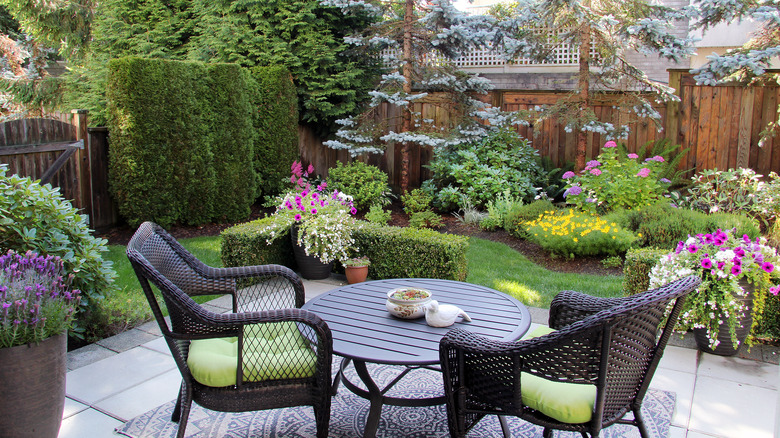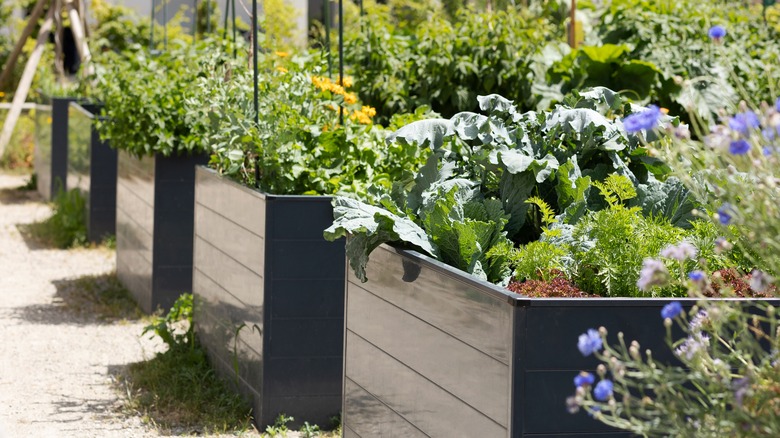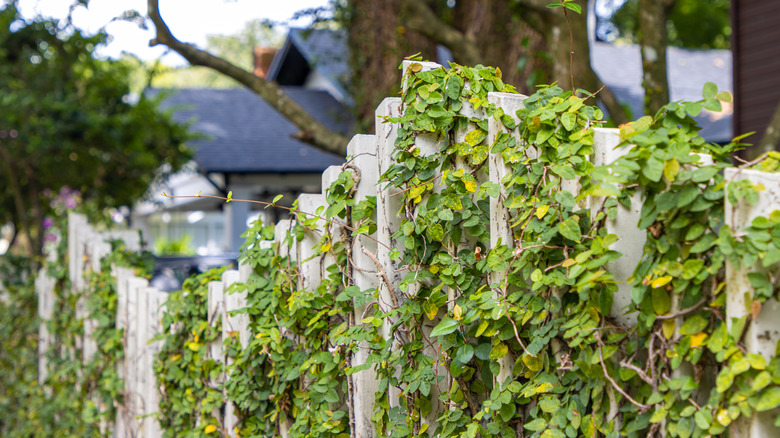Our Landscape Designer's Tips Will Make Your Garden Space Look And Feel Bigger
Do you have a small yard that you would like to make bigger? Whether you live in the city or choose a smaller plot of land, not everyone has acres in their backyard. While that might come with perks (hello, not having to shell out for lawnmowing services!), it can sometimes feel cramped or lackluster. The more room you have, the more experimental you can get with landscaping. That's because you have enough space to plant hedges, flower beds, and interesting flowering trees. But just because you have little square footage doesn't mean you can't make your space feel expansive. House Digest exclusively asked landscape design expert Roy Altaras from Roy Altaras Landscape Design and Build how to create the illusion of a sprawling landscape using clever design tricks.
Altaras says many people with smaller yards make a few common mistakes. "Some of the top things I see that homeowners do wrong in small spaces is keeping it flat and open and just looking it at it from one perspective." For more interest, you can first add dimension with different heights, whether with plants or garden accessories such as raised beds. Since the eye will register different elements that pull it upward, you will create the illusion of more space than you actually have. The second thing you can do is utilize the elements around your house — whether that's forest trees, mountain views, or cityscapes — and pull them into your yard to make it feel more expansive.
Create height in your garden to make it feel bigger
When working with a small space, most people's instinct is to keep the area as empty and open as possible to make it feel bigger. However, the opposite is true. "Some of the top things I see that homeowners do wrong in small spaces is keeping it flat and open and just looking at it from one perspective. Rather, they should add interest, perspective, and practicality in order to live in their garden," Altaras exclusively tells House Digest. You can easily create perspective by playing with elements of different heights, and the best way to do that is with raised garden beds. These containers will instantly lift your plants a few feet higher.
"Build raised beds to add another dimension to the garden. Fill it with different plant forms, including cascading plants," Altaras says. "As a garden designer, I like to use steel, stone, or concrete to build raised beds." You can play with different heights of plants in the beds, further pushing the eye upward. This will make the area feel less cramped because not everything is crowded and cramped on the ground. You also want to fight the urge to use smaller planters to conserve space. "Unlike what most people think, the wider they are, the larger the space appears to be," Altaras explains. Choose large, statement-making containers to make your tiny garden look much more spacious.
Utilize elements surrounding your yard to make it feel larger
If you have a small backyard, make it feel larger by pulling in the elements just outside of your fence. For example, say you have woods or mountains just behind your property line. Rather than dividing your property away from them, you want to make it feel part of it to increase your square footage. "Obscure the property lines. Hide fences and unwanted objects. Borrow the view of mountains or trees outside the property and bring that view into the garden," Altaras recommends in an exclusive interview with House Digest.
To do that, try to hide your fence with a DIY that will elevate the look of any yard. If you have woods, plant a row of hedges along the fence or grow climbing roses or trailing plants on it so it's covered in greenery. That way, any forested area near your property line will feel like part of your design. If you have mountains, try to obscure the fence by growing climbing plants native to the area, such as western white clematis. If you're not surrounded by nature and instead live in the city, consider getting a glass fence to pull in the cityscape, erasing your property line.



